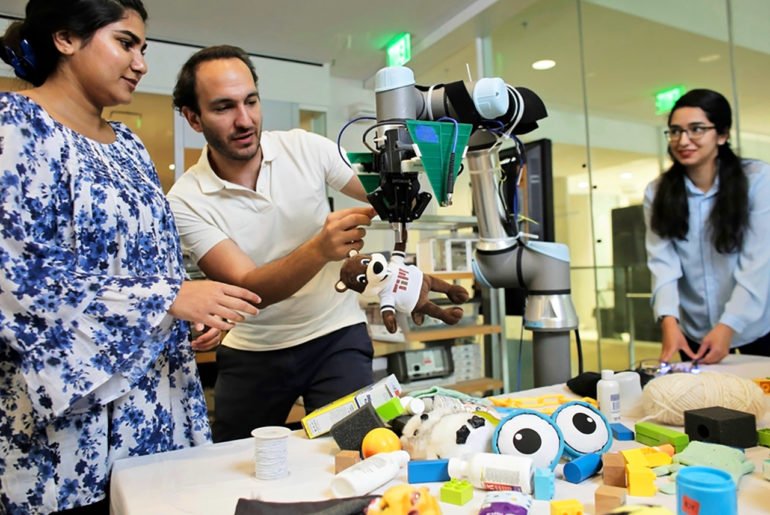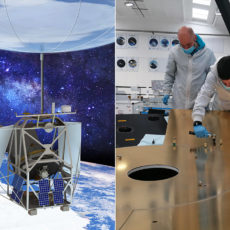
Photo credit: James Day, MIT Media Lab
MIT engineers have developed a robotic system capable of retrieving hidden, buried objects that uses multiple technologies, including visual information, radio frequency (RF) signals and computer vision. This new system is capable of efficiently retrieving any object buried in a pile as long as some items in the pile have RFID tags. Even more surprising, the target item does not have to be tagged for the system to recover it.
Several algorithms are running behind the system, called FuseBot, that reason about the probable location and orientation of objects under the pile. It then finds the most efficient way to remove objects blocking the target and extract the item. This reasoning enabled FuseBot to locate more hidden items than many cutting edge robotics systems, and in half the time. In other news, engineers are also busy developing an Infinity Train, which can run forever by charging itself with gravity.
- Who doesn't love robots? Introduce kids to the creative world of coding with the best educational STEM toys to foster their curiosities. Building,...
- Includes 847 LEGO pieces that kids can build and rebuild into 5 cool multifunctional models. The best and most popular robotics toys for 7-12 year old...
- Construct and code Vernie the Robot to dance, rock out on the Guitar4000, foster Frankie the Cat, interact with the Autobuilder, or explore a new...

I think that the work is very exciting in many ways and demonstrates the potential of tightly integrating some of the advances in wireless signals technologies with robotics. For example, a key observation that the paper builds upon is that unlike visible light and infrared, RF signals can go through standard materials like cardboard, wood, and plastic. The paper further capitalizes on this observation to address very difficult problems in robotics for which more conventional sensors are very limited, such as searching for objects in clutter,” said Stephanie Gil, assistant professor of computer science at the Harvard John A. Paulson School of Engineering and Applied Sciences.






